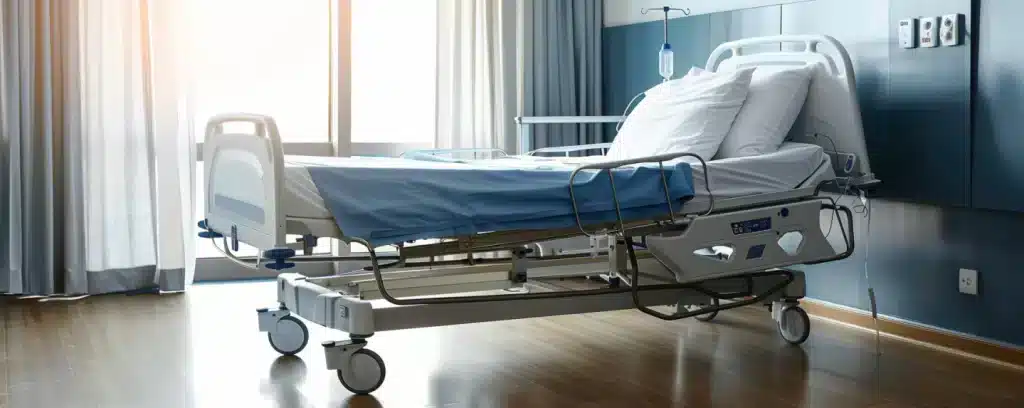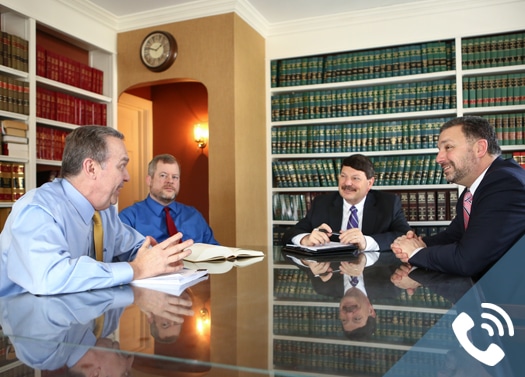What Happens If You Hit a Pedestrian and They Walk Away: Legal and Medical Implications
Last updated Thursday, April 17th, 2025

What happens if you hit a pedestrian and they walk away can be unsettling, leaving you unsure about the immediate and long-term repercussions. This guide directly addresses your concerns, laying out the essential steps you need to take following such an incident. We’ll navigate through the complexities of legal responsibilities and unseen injuries to ensure you’re informed and ready to act responsibly.
Key Takeaways
- Drivers are legally required to stop, exchange information, and report any accident to the authorities if there are known injuries or property damage. You may also consider reporting the accident, even if the pedestrian appears uninjured and walks away from the scene, in case the pedestrian reports something different later.
- Determining fault in pedestrian accidents relies on assessing negligence and may involve comparative fault, considering factors such as jaywalking, speeding, and adherence to traffic control devices.
- Pedestrians may develop delayed injury symptoms after an accident, emphasizing the importance of seeking medical evaluation immediately even if no obvious injuries are present.

Get Your FREE Case Review,
In Person or Virtually Online
Immediate Steps After a Pedestrian Walks Away from an Accident
Imagine for a moment: You’re driving, and suddenly, a pedestrian appears in front of your car. You hit the brakes, but it’s too late – contact is made. But then, the pedestrian gets up, seemingly uninjured, and walks away. What do you do?
Primarily, you should:
- Halt the vehicle without delay, irrespective of the pedestrian’s response.
- Ensure everyone’s safety, provide any necessary assistance, and stay at the scene.
- Attempt to exchange contact information with the pedestrian if they are willing and able to do so before leaving the scene.
Documenting the Scene
Once you’ve confirmed everyone’s safety, proceed to record the details of the incident. But why is this so important? Simply sitting and waiting for the police to arrive isn’t enough.
Taking diverse perspective photos can capture different aspects of the accident scene, providing a visual record that can be crucial for any subsequent legal or insurance procedures. Here are some tips for taking effective accident scene photos:
- Take photos from multiple angles to capture different perspectives of the scene.
- Include close-up shots of any damage to vehicles or property.
- Take wide shots to show the overall layout of the scene.
- Note any environmental factors that could have contributed to the accident, such as poor lighting or obstructions.
This information can be invaluable when it comes to determining fault.
Seeking Witnesses
Witnesses to a pedestrian accident can be a vital part of the evidence gathering process. In the aftermath of a car accident, the adrenaline rush and shock can cloud your own recollection of the event. Therefore, collecting statements from spectators is vital, especially when the accident happened so quickly.
Approach potential witnesses promptly and respectfully, asking if they would be willing to provide their contact details. Such data may be pivotal for law enforcement and your insurance company in reconstructing the accident.
Legal Duty to Report the Accident
Drivers are legally required to stop, exchange information, and report any accident to the authorities if there are known injuries or property damage. Even if the pedestrian appears uninjured and walks away from the scene, it is probably a good idea to report the incident in case the pedestrian reports something different later.
Immediately following the incident, you should:
- Call the police to report the accident.
- Provide identification and assist the pedestrian as needed.
- Refrain from leaving the scene until authorities have arrived and all required information has been provided.

Get Your FREE Case Review,
In Person or Virtually Online
Assessing Fault and Responsibility
After the dust has settled, the question arises: Who’s at fault? Determining responsibility in pedestrian accidents is often a complex process. It entails scrutinizing not only the available evidence but also the conduct of all the parties involved.
Negligence is a key factor in determining fault. It’s defined as the failure to exercise reasonable care which results in harm to another party. But it’s not always black and white. Various factors can influence the severity of legal consequences for drivers, such as:
- whether the driver was speeding
- whether the pedestrian was jaywalking
- road conditions
- traffic control devices
These factors can all play a role in determining fault.
Understanding Comparative Fault
Sometimes, both the pedestrian and the driver contribute to an accident. In these cases, the concept of comparative fault comes into play, allowing for the sharing of responsibility.
Let’s say a pedestrian was jaywalking when a speeding driver hit them. Both parties failed to exercise reasonable care, making them both partially at fault. This shared fault can impact the amount of compensation the pedestrian is entitled to, depending on state-specific rules on shared fault.
Role of Traffic Signals and Road Rules
Traffic signals and road rules are not just guidelines – they are laws designed to keep us safe. Their significance is highlighted when attributing blame in pedestrian accidents, car accidents, traffic accidents, and parking lot accidents.
A pedestrian who crosses the street against a red light or a driver who fails to yield at a crosswalk might be found at fault in an accident. The law’s requirements for yielding the right of way play a significant role in determining legal responsibility for an accident. So, adhering to traffic signals and road rules is crucial for both drivers and pedestrians.
Potential Injuries and Delayed Symptoms
Dealing with potential pedestrian injuries stands as one of the most perplexing aspects of pedestrian accidents. It’s not uncommon for a pedestrian to walk away from an accident without immediate symptoms. However, certain common pedestrian accident injuries, such as soft tissue damage, bone fractures, and concussions, may have delayed symptoms that become apparent hours, days, or even weeks later, revealing the true extent of injuries suffered.
From trauma to the head, neck, face, arms, abdomen, chest, and lower extremities, the range of potential injuries in pedestrian accidents is wide and varied. That’s why medical evaluation is vital after pedestrian accidents, no matter how minor they may seem initially.
Common Delayed Injury Symptoms
Delayed onset injuries are not immediately recognizable due to endorphins and adrenaline which can temporarily mask pain and discomfort. It’s crucial to be aware of this because serious injuries like head and brain injuries, including traumatic brain injuries, internal bleeding, or fractures may not become apparent until the adrenaline wears off.
Symptoms such as severe pain, mood swings, and sleep problems may start to emerge hours or even days after the accident. Such delayed symptoms should never be ignored as they could indicate a serious injury, including spinal cord injuries, that requires immediate medical attention.
The Importance of Medical Treatment
Considering the possibility of delayed symptoms, pursuing medical treatment is a vital step following any pedestrian accident. Even if you feel fine immediately after the accident, it’s essential to get checked out by a medical professional.
Prompt medical attention ensures that any injuries, even those that may not be immediately apparent, are diagnosed and treated as soon as possible. Additionally, medical records documenting your injuries can serve as crucial evidence if legal action is necessary later on.
Legal Consequences and Insurance Claims
Pedestrian accidents may result in extensive legal and financial repercussions. If you’re a driver involved in an accident, you may face criminal penalties, and if you’re a pedestrian, you may need to seek compensation for your injuries. Proper documentation, including photographs, eyewitness accounts, and police reports, can be crucial for legal procedures and insurance claims.
You may need to dispute an insurance company’s ruling on fault or consider seeking legal counsel.
Facing Criminal Charges
The legal repercussions of a pedestrian accident can be severe. Drivers who flee the scene after hitting a pedestrian may be charged with a felony and face imprisonment. Similarly, driving under the influence of alcohol or drugs is a criminal offense that carries severe penalties.
Apart from potential felonies for specific behaviors, drivers who hit pedestrians can also face general criminal charges alongside civil liability for the pedestrian’s injuries. It’s crucial to understand these potential legal consequences and to seek experienced legal representation if necessary.

Get Your FREE Case Review,
In Person or Virtually Online
How to Avoid Pedestrian Accidents
Although understanding the post-accident procedures is important, it’s always preferable to prevent such mishaps in the first place. By adopting safe driving practices and maintaining awareness of pedestrian traffic, drivers can significantly reduce the risk of pedestrian accidents.
For pedestrians, following road rules, using assigned crosswalks, and staying alert can boost safety and visibility. It’s a shared responsibility that requires efforts from both drivers and pedestrians.
Driver Awareness and Speed Limits
As a driver, maintaining awareness and adherence to speed limits are crucial steps for preventing accidents. This is especially important in areas with higher pedestrian activity such as school zones and residential neighborhoods.
By controlling your speed and being prepared to stop when approaching crosswalks, you can ensure visibility and give other drivers time to see and react to pedestrians crossing. Remember, creating safer walking environments hinges on cautious driving behaviors and maintaining safe speeds.
Pedestrian Visibility and Vigilance
For pedestrians, enhancing visibility to drivers is crucial for safety. This can be achieved by strictly adhering to road rules and using designated pedestrian crossing areas, such as crosswalks or intersections when crossing streets.
In areas without sidewalks, walking against the direction of oncoming traffic allows pedestrians to see approaching vehicles. Additionally, adopting defensive pedestrian practices such as making eye contact with drivers, wearing visible clothing, and avoiding distractions can play a critical role in enhancing pedestrian safety and visibility.
When Legal Action Is Necessary
Despite insurance claims potentially covering some costs arising from a pedestrian accident, there may be instances where legal action becomes necessary. This is particularly true when a party seeks financial compensation for damages or injuries caused by the other party.
For instance, a driver might consider taking legal action against a pedestrian if the pedestrian caused extensive damage to the vehicle or if the driver suffered significant injuries while the pedestrian was uninjured. Recognizing when to seek legal recourse is pivotal for both drivers and pedestrians involved in an accident.
Pedestrian’s Legal Options
If you’re a pedestrian who has been involved in an accident, you might be wondering what your legal options are. You can take legal action for restitution following an accident, even if the driver did not flee the scene.
You may file wrongful death claims against drivers, vehicle owners, and potentially government entities responsible for road planning and maintenance. Depending on the specifics of the case, you could recover a range of damages, including medical costs, lost income, and pain and suffering. In some jurisdictions, even a slight contribution to the fault by a pedestrian can bar them from recovering damages.
Driver’s Defense Strategies
As a driver, facing legal action after a pedestrian accident can be daunting. However, there are defense strategies that can be employed. For example, drivers can argue contributory or comparative negligence if a pedestrian’s actions played a role in causing the accident, potentially reducing the driver’s liability.
If a pedestrian was jaywalking when the accident occurred, they may be deemed at fault, which can influence the driver’s defense strategy. In states with contributory negligence laws, if a pedestrian contributed to the accident in any way, they may be barred from recovering damages, which can be a key consideration in a driver’s legal defense.
Frequently Asked Questions
What should I do immediately after hitting a pedestrian?
Immediately stop your vehicle, ensure everyone’s safety, provide assistance, and exchange contact information with the pedestrian before they leave the scene. It’s important to stay at the scene and fulfill your legal obligations.
How is fault determined in pedestrian accidents?
Fault in pedestrian accidents is determined by analyzing evidence and examining the actions of all involved parties, considering factors such as negligence, adherence to traffic signals and road rules, and contributory or comparative negligence.
What are some common delayed symptoms after a pedestrian accident?
If you experience severe pain, mood swings, or sleep problems after a pedestrian accident, it could indicate serious injuries such as traumatic brain injuries, internal bleeding, or fractures. Take any delayed symptoms seriously and seek medical attention promptly.
What legal consequences might a driver face after hitting a pedestrian?
A driver could face criminal penalties, such as imprisonment, for hitting a pedestrian, especially in cases of hit-and-run or driving under the influence. Additionally, they may be held civilly liable for the pedestrian’s injuries.
How can pedestrian accidents be avoided?
To avoid pedestrian accidents, both drivers and pedestrians should follow road rules, with drivers maintaining awareness and adhering to speed limits while pedestrians use designated crosswalks and stay vigilant to enhance their visibility to drivers. Let’s work together to make our roads safer for everyone.



